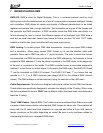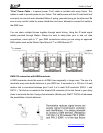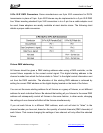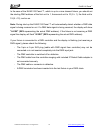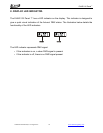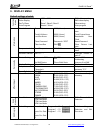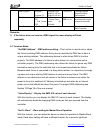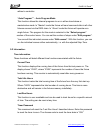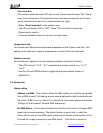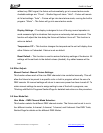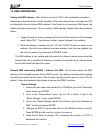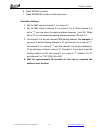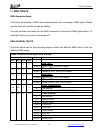
ELAR 216 Panel
™
©Elation Professional, Los Angeles Ca. 21 www.ElationLighting.com
Edit Program
Program 1
:
Program 10
Program Test
Step 01=SCxxx
Step 64=SCxxx
(“STEP XX”)
Testing program
Program in loop
Save and exit
Edit Scenes
Edit Scene
001
~ Edit Scene
250
Red,……
--Secne Time--
Input By
Outside
Red=xxx……
TIME=xx.xs
Save and
automatically return
manual scenes edit
Rec. Controller
XX~XX
Scenes via External
DMX Controller
Remarks:
1) If the fixture does not receive a DMX signal the menu display will flash
repeatedly.
9.1 Function Mode:
“Set DMX Address” - DMX address setting – This function is used to set or adjust
the fixture’s starting DMX address. Every device controlled by DMX has to have a
unique starting address. The addressing feature is what allows DMX to function
properly. The DMX address of a fixture is what allows it to communicate with a
controller properly. The DMX addressing also allows the fixture to ignore any DMX
information coming from the controller that is not meant specifically the fixture.
Because each fixture is connected in a daisy-chain fashion it is imperative to assign
a proper and unique starting DMX address to each and every fixture. The DMX
address is non-destructive and will remain in the fixture’s memory even when the
power to the unit is switched off. Memory is backed-up and retain by an internal
power source that should last about five years. For proper DMX addressing see
Section 10/Page 35 of this user manual.
“Value Display” - Display the DMX 512 value of each channel
With this function you can display the DMX 512 value of each channel. The display
will automatically detail the changing DMX values as they are received from the
controller.
“Set To Slave” - Slave setting for Master/Slave Operation
With this function, you can define the device as slave for operation in Master/Slave
mode. Each slave setting will have a different function for a dynamic lightshow





